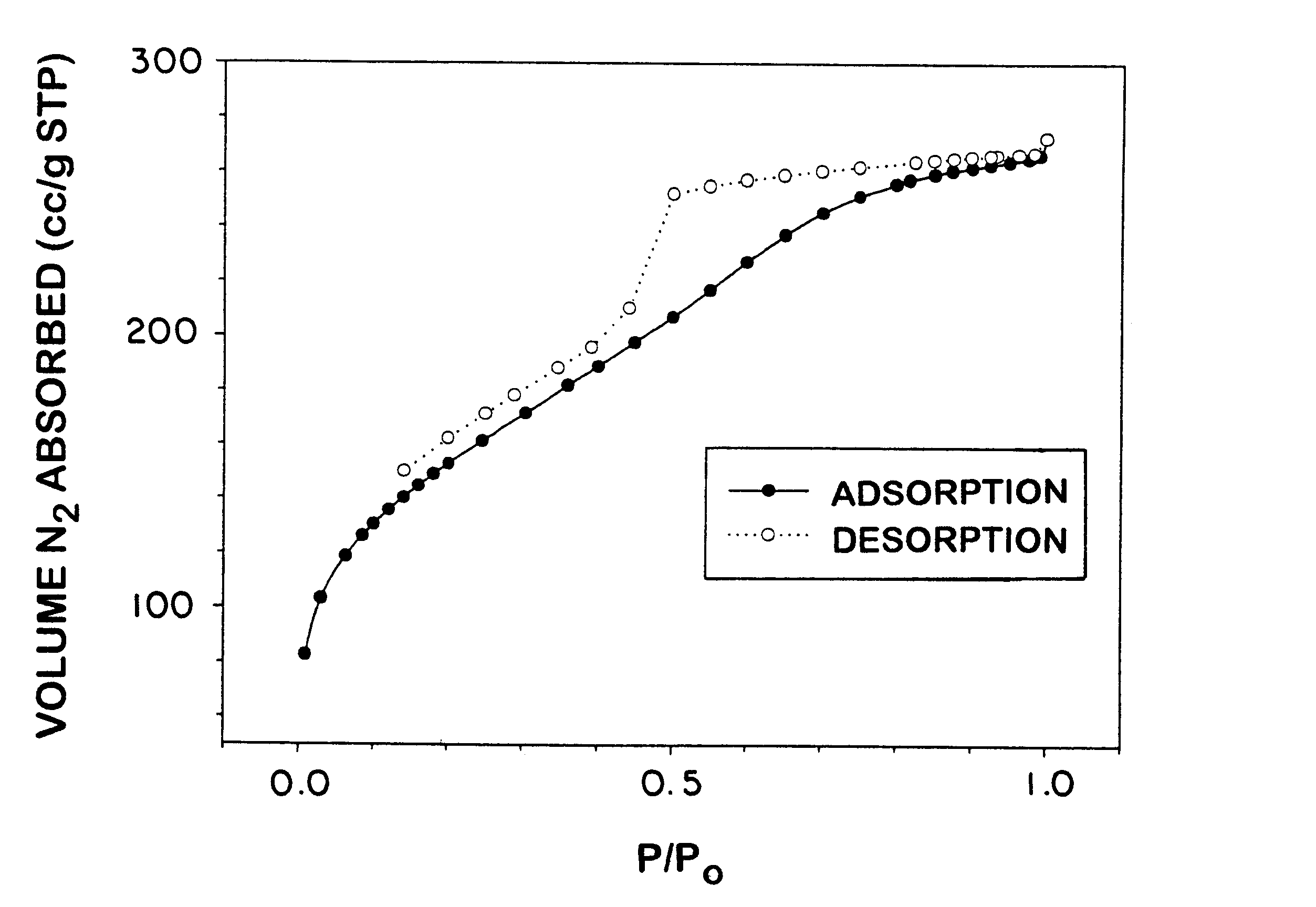Reusable polysilsesquioxane adsorbents for pollutants
a technology of polysilsesquioxane and pollutants, which is applied in the direction of combustible gas purification/modification, other chemical processes, and separation processes, can solve the problems of high cost, limited success of toxic pollutants, and inability to absorb adsorbents, etc., to achieve rapid desorption of adsorbate molecules, high solubility of aromatics, and low cost
- Summary
- Abstract
- Description
- Claims
- Application Information
AI Technical Summary
Benefits of technology
Problems solved by technology
Method used
Image
Examples
example 2
This experiment reflects ability of the arylene-bridged polysilsesquioxane sorbent, prepared above, to adsorb 4-nitrophenol, 4-chlorophenol, and 4-methylphenol from separate aqueous solutions.
Pursuant to the procedure, 0.1 g of the sorbent was mixed with 10 ml of a standardized phenolic aqueous solution for 15 minutes. The amount of the phenolic compound was calculated by the difference in concentration between the filtrate and the initial standard solutions, as measured by UV / vis spectroscopy (.lambda..sub.max =316 nm). As shown in FIG. 3, 0.10 g of the arylene-bridged sorbent removed greater than 99%, on weight basis, of the 4-nitrophenol from 10 ml of the 10.sup.-4 M aqueous solution.
Table 1, below, compares adsorption or uptake of 4-chlorophenyl and 4-methylphenyl compared to 4-nitrophenyl from aqueous solutions ranging from 10.sup.-4 to 10.sup.-3 M:
In the above Table 1, 4-NP is 4-nitrophenol, 4-CP is 4-chlorophenol, and 4-MP is 4-methylphenol.
Column tests were also performed wi...
example 3
The adsorption kinetics of 4-nitrophenol by the arylene-bridged sorbent, prepared above, was performed by batch procedures for specific contact times, as noted in FIG. 5. Greater than 96% of the 4-nitrophenol was adsorbed during the first minute of contact time. A 15-minute contact time resulted in the removal of more than 99% of the adsorbate 4-nitrophenol.
example 4
This example demonstrates rapid sorbent regeneration whereby the arylene-bridged polysilsesquioxane sorbent prepared above and loaded with 4-nitrophenol is subjected to and aqueous solution of a lower alcohol wash.
Pursuant to the regeneration procedure, a 0.10 g sample of the sorbent that had adsorbed in 15 minutes greater than 99%, on weight basis, of the 4-nitrophenol from a 10 ml aliquot of an aqueous 10.sup.-4 M solution was placed in 10 ml of absolute ethanol for 15 minutes. The regenerated sorbent was then separated by filtration. Analysis of the filtrate by UV / vis spectroscopy showed that greater than 95% of the 4-nitrophenol adsorbate was removed from the arylene-bridged polysilsesquioxane. The ethanol was recovered from the filtrate by distillation, leaving residual 4-nitrophenol.
PUM
| Property | Measurement | Unit |
|---|---|---|
| temperature | aaaaa | aaaaa |
| pore diameter | aaaaa | aaaaa |
| pore diameter | aaaaa | aaaaa |
Abstract
Description
Claims
Application Information
 Login to View More
Login to View More - R&D
- Intellectual Property
- Life Sciences
- Materials
- Tech Scout
- Unparalleled Data Quality
- Higher Quality Content
- 60% Fewer Hallucinations
Browse by: Latest US Patents, China's latest patents, Technical Efficacy Thesaurus, Application Domain, Technology Topic, Popular Technical Reports.
© 2025 PatSnap. All rights reserved.Legal|Privacy policy|Modern Slavery Act Transparency Statement|Sitemap|About US| Contact US: help@patsnap.com



